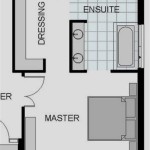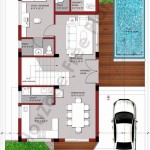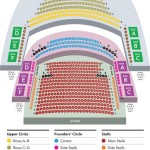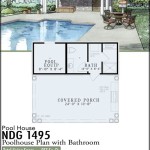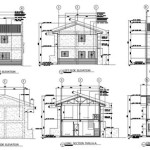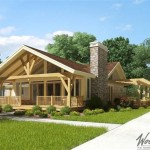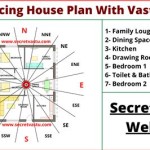Biggest Mansion Floor Plans: A Detailed Exploration
The allure of mansions lies not just in their sheer size, but also in the intricate design and thoughtful layouts that transform vast spaces into functional and aesthetically pleasing homes. Exploring the floor plans of the largest mansions offers insight into the architectural considerations, lifestyle accommodations, and innovative design principles that define these exceptional properties. Understanding these floor plans involves analyzing key elements such as the arrangement of rooms, the flow of traffic, the integration of amenities, and the overall coherence of the design.
Mansion floor plans are complex architectural blueprints that require considerable expertise to both design and interpret. They often incorporate elements far beyond the standard residential design, including commercial-grade systems for HVAC, electrical, and plumbing. This complexity contributes to the high cost and extended timelines associated with building and maintaining such properties.
Key Point 1: Architectural Styles and Their Influence on Mansion Floor Plans
The architectural style of a mansion significantly influences its floor plan. Different styles prioritize different aspects of design, resulting in variations in room arrangement, spatial flow, and overall layout. For example, a traditional European-style mansion may feature grand halls, formal dining rooms, and separate wings for different functions, while a modern mansion may prioritize open-concept living spaces, integrated technology, and seamless indoor-outdoor transitions.
Consider the classical Palladian style, often characterized by symmetry and proportion. Floor plans for mansions in this style typically feature a central axis with rooms arranged symmetrically on either side. Grand entryways, formal living rooms, and dining rooms are often located along this axis, creating a sense of formality and order. Bedrooms and service areas are often relegated to separate wings, further emphasizing the hierarchical arrangement of spaces. This emphasis on formal living and separation of functions distinguishes Palladian-style mansion floor plans from those of other styles.
In contrast, contemporary mansion design often prioritizes open-concept living, where kitchen, dining, and living areas flow seamlessly together. Larger windows and sliding glass doors are incorporated to blur the boundaries between indoor and outdoor spaces. Technological integration is also a common feature, with smart home systems controlling lighting, temperature, and security. These modern floor plans reflect a shift towards a more casual and technologically integrated lifestyle.
Furthermore, regional variations also play a role. For instance, sprawling ranch-style mansions, more commonly found in the American Southwest, often feature single-story layouts with interconnected rooms and extensive outdoor living spaces. These designs prioritize accessibility and connection with the surrounding landscape. Understanding the architectural style of a mansion is crucial for comprehending its floor plan's overall logic and purpose.
Key Point 2: Essential Elements and Their Placement within a Mansion Floor Plan
Certain elements are common to most mansion floor plans, regardless of architectural style, although their size, placement, and specific design may vary considerably. These elements include the master suite, guest suites, entertainment areas, service areas, and outdoor living spaces. The strategic placement of these elements is critical for ensuring both functionality and privacy within the mansion.
The master suite, typically the largest and most luxurious bedroom in the mansion, often comprises a spacious bedroom, a lavish bathroom, a walk-in closet, and sometimes a private sitting area or study. Its location is usually chosen to maximize privacy and views, often on an upper floor or in a secluded wing. The design may include features such as a private balcony, a fireplace, and his-and-hers bathrooms and dressing rooms.
Guest suites are also essential features, providing comfortable and private accommodations for visitors. They typically include a bedroom, a bathroom, and sometimes a small living area. These suites are often located away from the main living areas and the master suite to ensure privacy for both the residents and their guests. The number of guest suites varies depending on the size and lifestyle of the residents.
Entertainment areas are designed for hosting gatherings and providing recreational opportunities. These may include formal living rooms, ballrooms, home theaters, game rooms, and wine cellars. These spaces are often strategically located near each other to facilitate social interaction and entertainment. Their design often incorporates features such as high ceilings, large windows, and specialized lighting and sound systems.
Service areas, including the kitchen, laundry room, staff quarters, and garages, are essential for the smooth operation of the mansion. These areas are typically located away from the main living areas to minimize noise and disruption. The kitchen, in particular, is often designed with commercial-grade appliances and ample counter space to accommodate catering and large-scale meal preparation. Staff quarters may include separate bedrooms, bathrooms, and living areas for household staff.
Outdoor living spaces, such as patios, terraces, swimming pools, and gardens, are an integral part of many mansion floor plans. These areas are designed to extend the living space outdoors and provide opportunities for relaxation and recreation. Their placement is often carefully considered to maximize sunlight, views, and privacy. Outdoor kitchens, fireplaces, and seating areas are common features of these spaces.
Key Point 3: Unique Features and Design Innovations in Mansion Floor Plans
Beyond the essential elements, many mansion floor plans incorporate unique features and design innovations that distinguish them from standard residential properties. These features may include specialized rooms, technological integrations, sustainable design elements, and custom architectural details. These additions reflect the individual preferences and lifestyle needs of the owners.
Specialized rooms are often designed to cater to specific hobbies or interests. These may include art studios, music rooms, libraries, gyms, or home spas. These rooms are often custom-designed to meet the unique requirements of the activity, such as specialized lighting for an art studio or soundproofing for a music room. The inclusion of these specialized rooms allows residents to pursue their passions within the comfort of their own home.
Technological integrations are increasingly common in modern mansion floor plans. Smart home systems control lighting, temperature, security, and entertainment, providing convenience and energy efficiency. Integrated security systems monitor the property and provide alerts in case of intrusion or emergencies. Home theaters are often equipped with state-of-the-art audio and visual equipment, creating an immersive entertainment experience. These technological integrations enhance the comfort, convenience, and security of the mansion.
Sustainable design elements are also becoming increasingly important in mansion design. These may include solar panels, rainwater harvesting systems, geothermal heating and cooling systems, and energy-efficient windows and insulation. These features reduce the environmental impact of the mansion and lower its operating costs. Sustainable materials, such as reclaimed wood and recycled building materials, are also often incorporated into the design.
Custom architectural details are often incorporated to enhance the aesthetic appeal and uniqueness of the mansion. These may include custom millwork, handcrafted tilework, intricate ceiling designs, and unique lighting fixtures. These details add character and personality to the mansion, reflecting the individual style and tastes of the owners. The incorporation of these custom details often requires the expertise of skilled artisans and craftsmen.
Understanding mansion floor plans requires a comprehensive understanding of architectural styles, essential elements, and unique design innovations. The design and implementation of these plans are large undertakings which can shape the way of life for the people who occupy the space.

Mansion Floor Plan Plans Luxury House

1377 751 Mansion Floor Plan Luxury Plans Unique House

Humber House Mansion Plans Luxury

Pin On Floor Plans

Large House Plan Examples

Britain S Most Expensive Repossession Is 30million Mansion Floor Plan Architectural Plans House

Mansion Floor Plans Top No Layouts Design Ideas Architecture

1377 751 Mansion Floor Plan Luxury Plans Unique House

Imposing Mansion Floor Plans On With 23 Responses To James Mega Design Plan Designs

3800 Sq Ft Mediterranean House Floor Plan 4 Bed Bath
Related Posts

